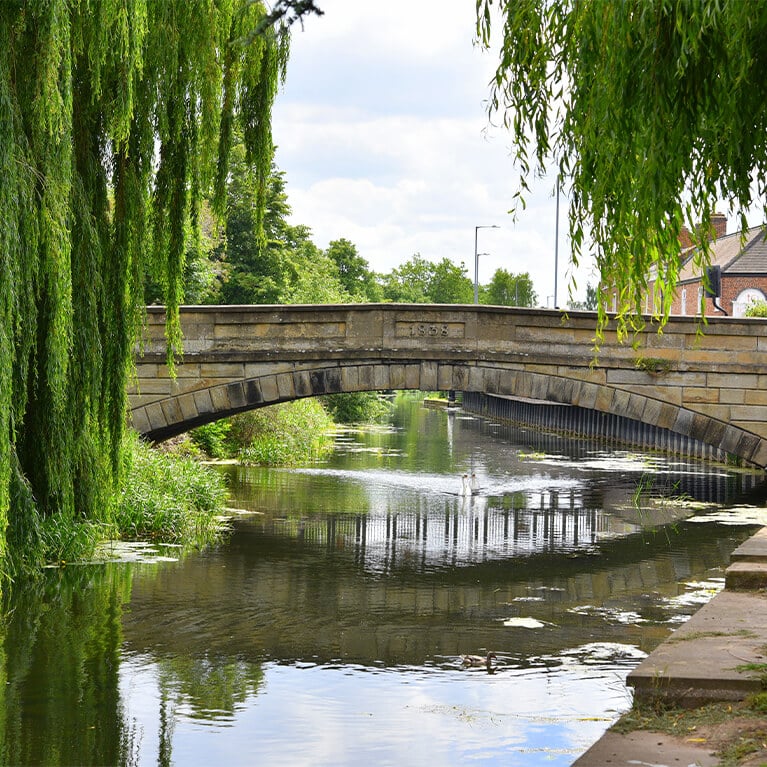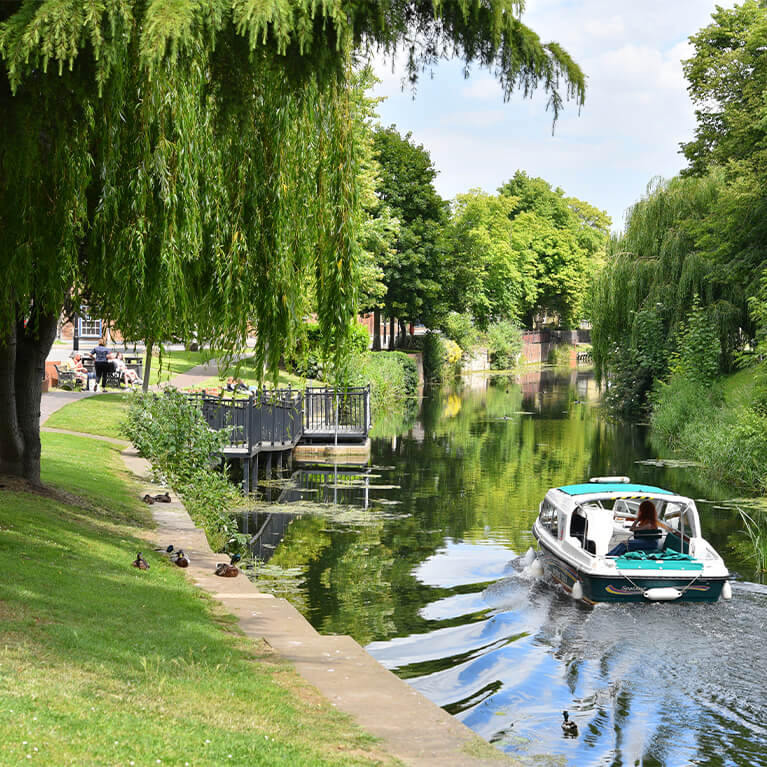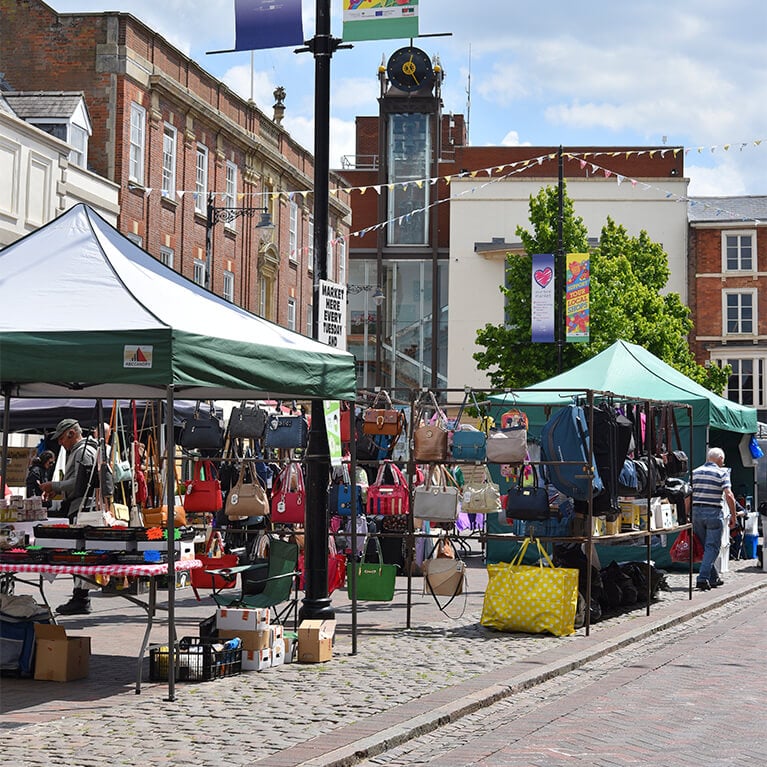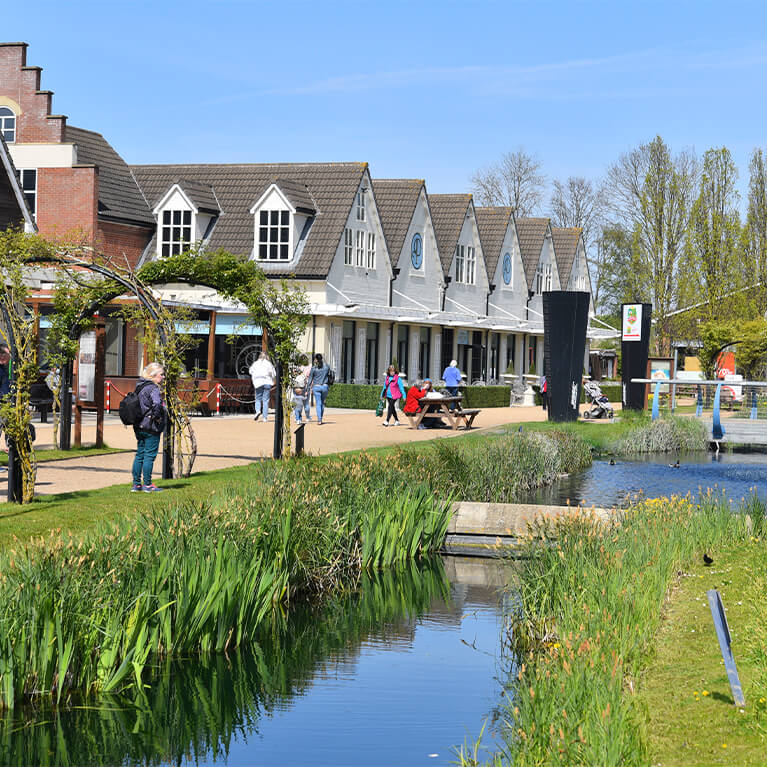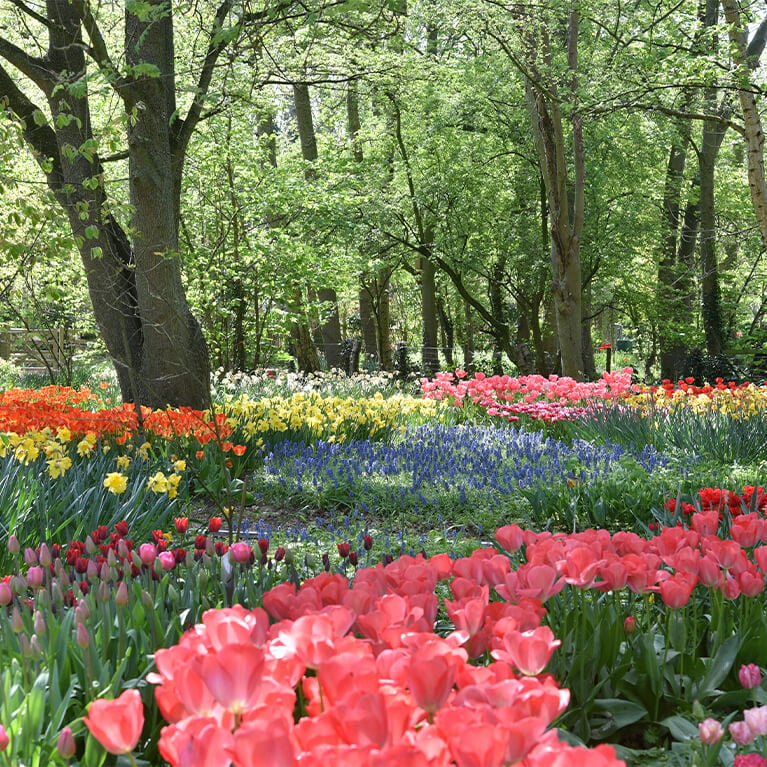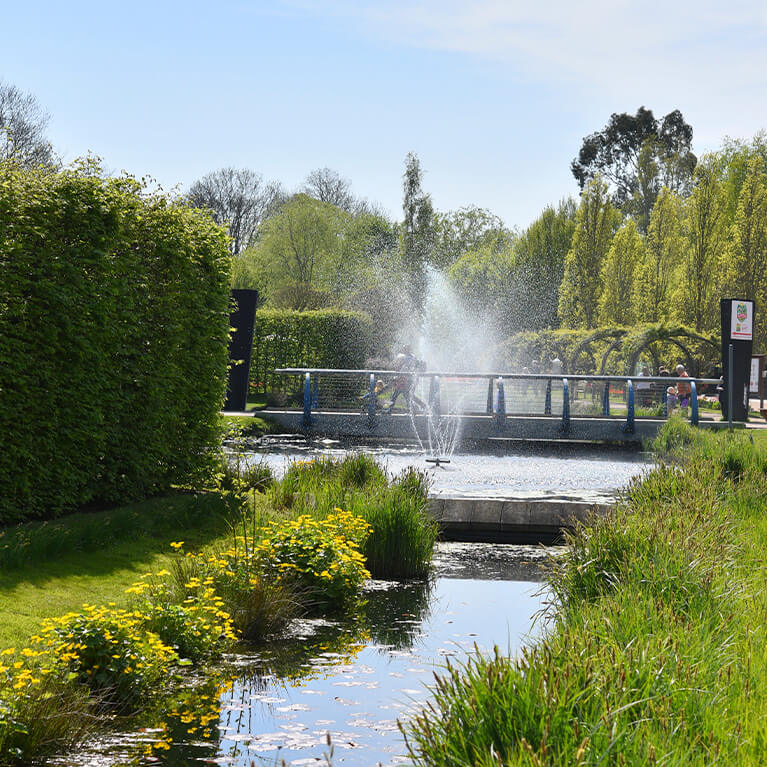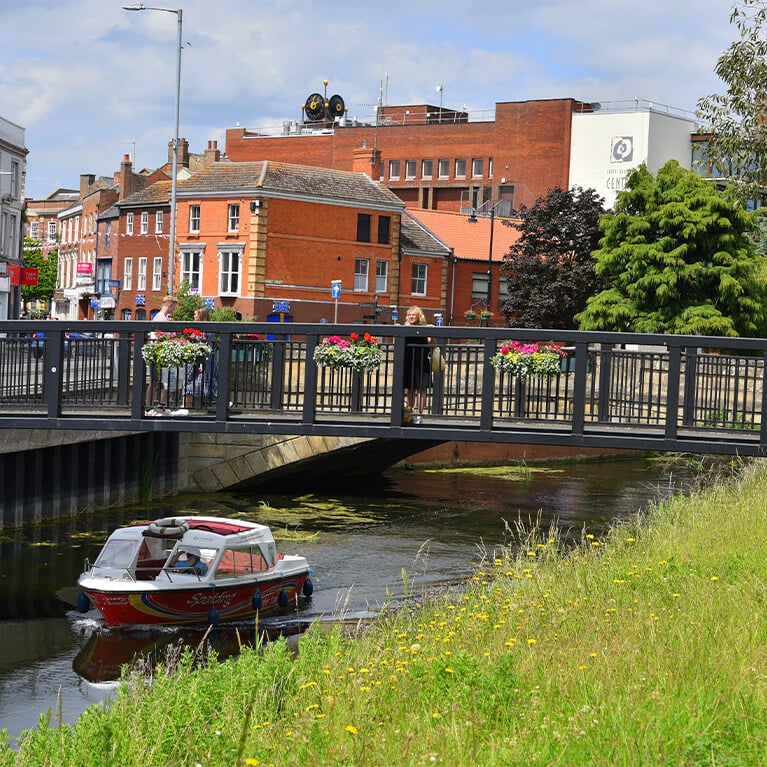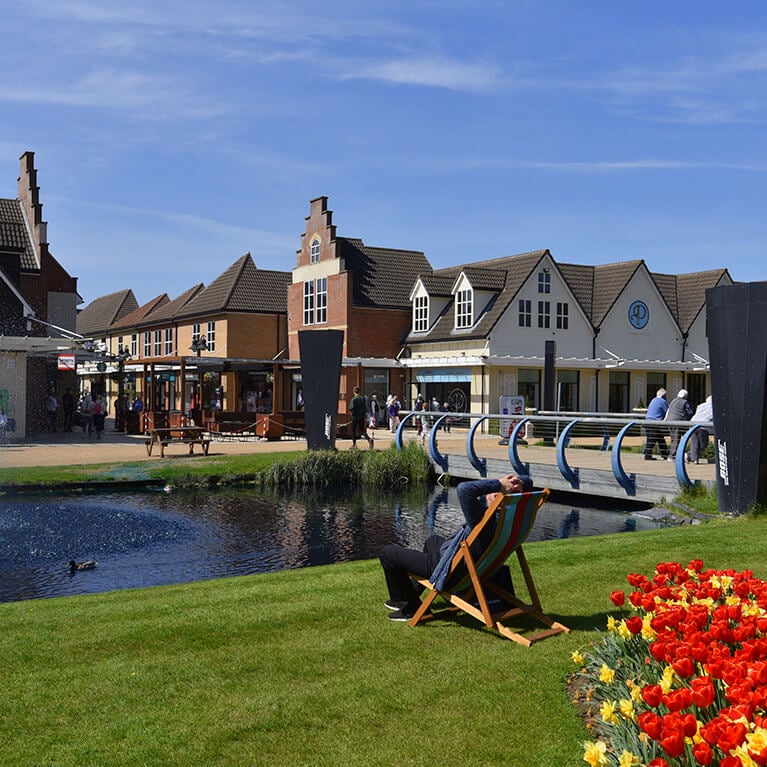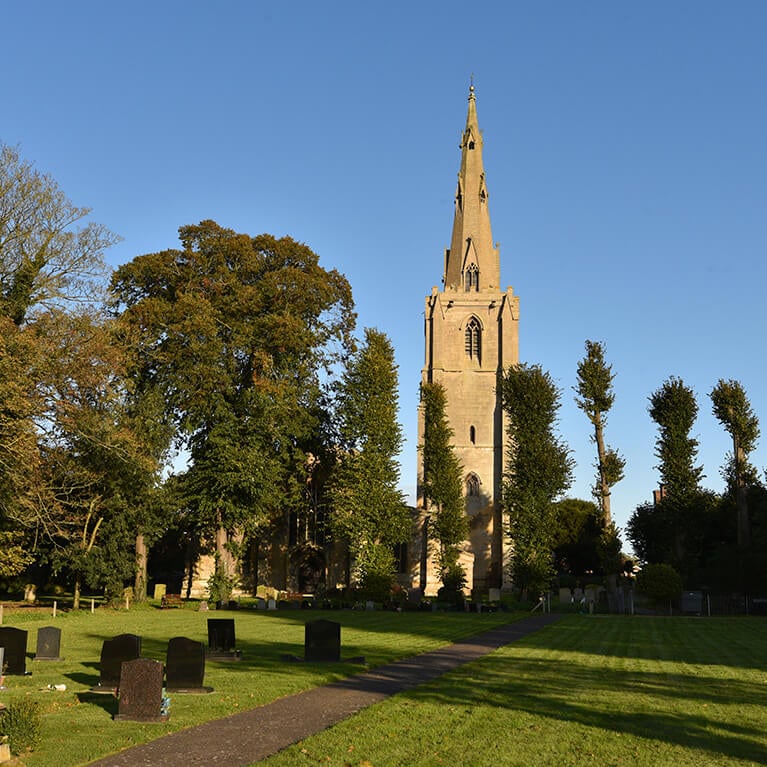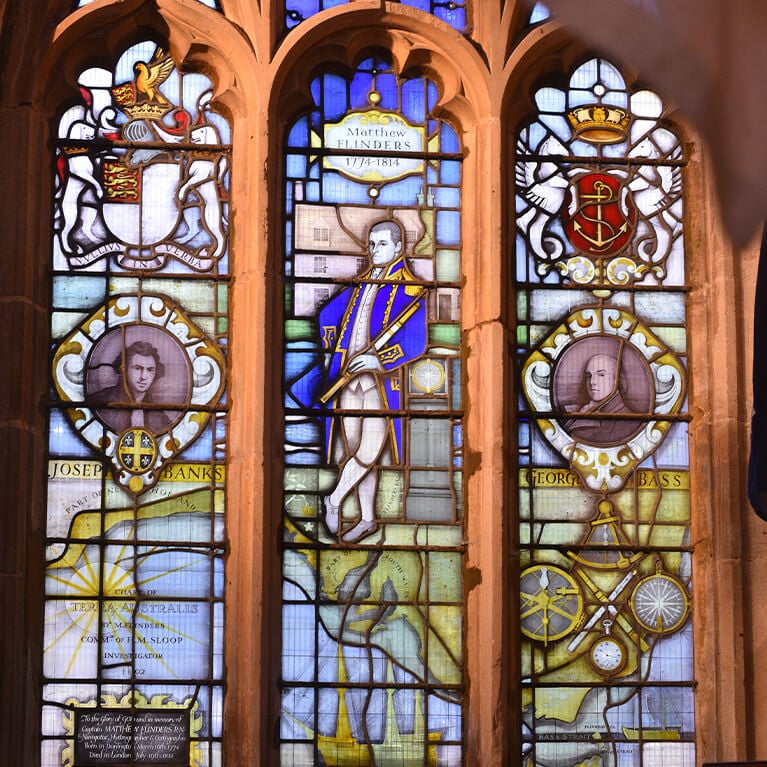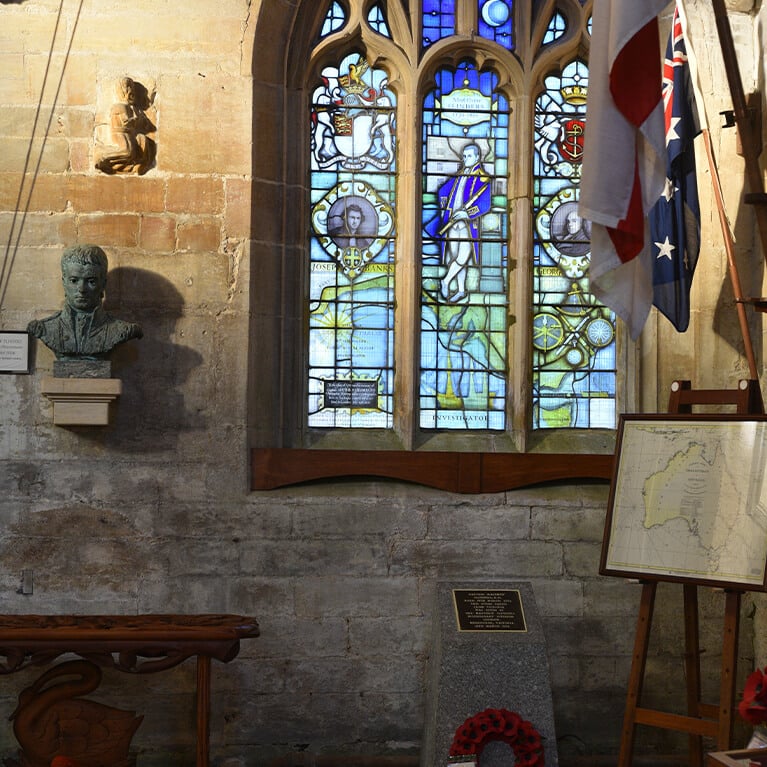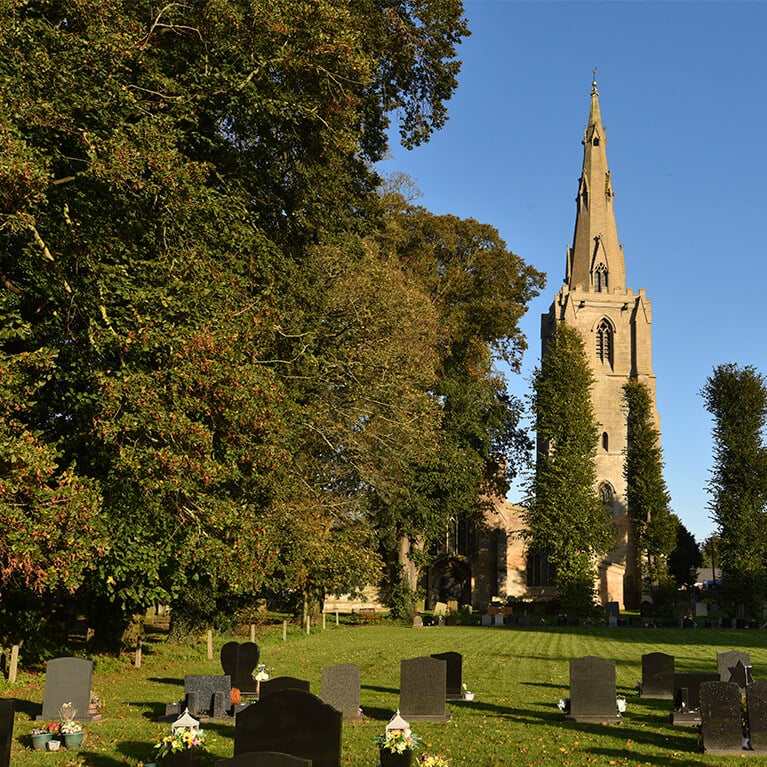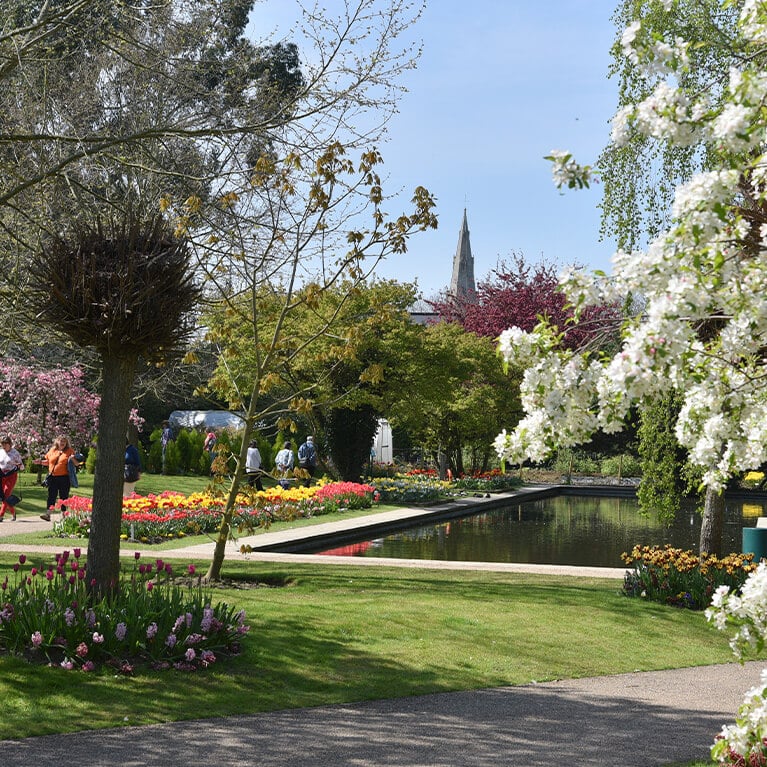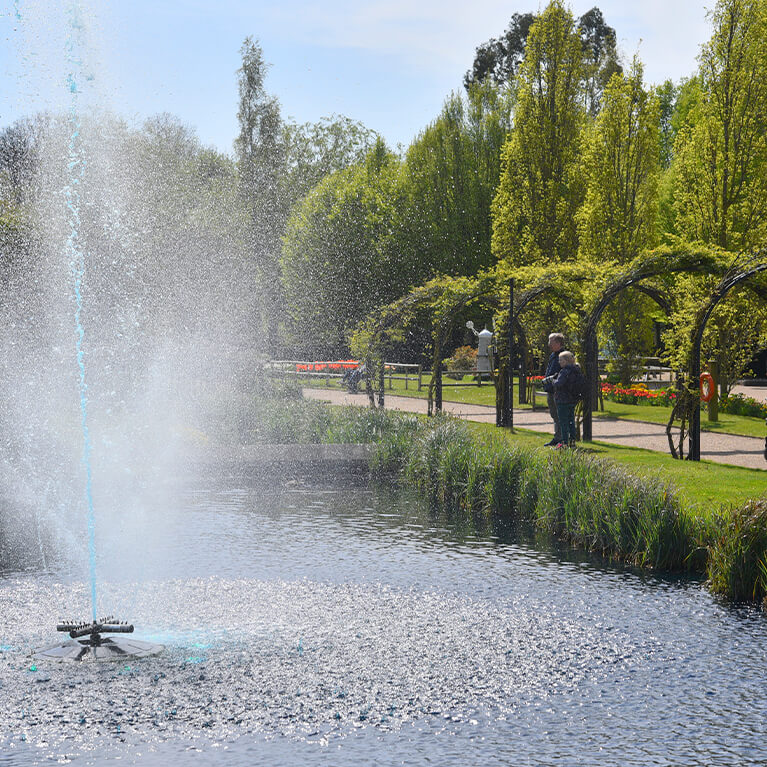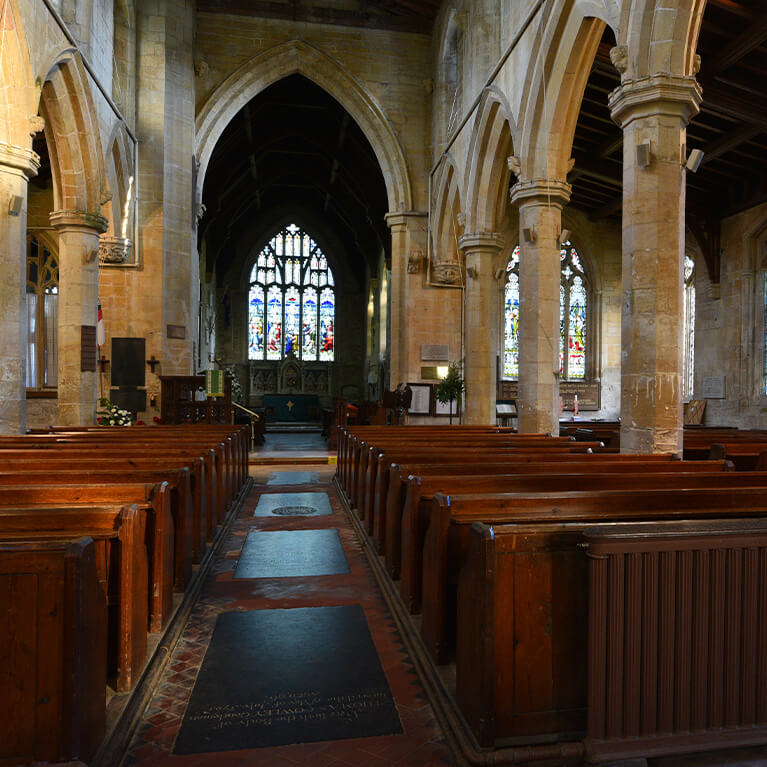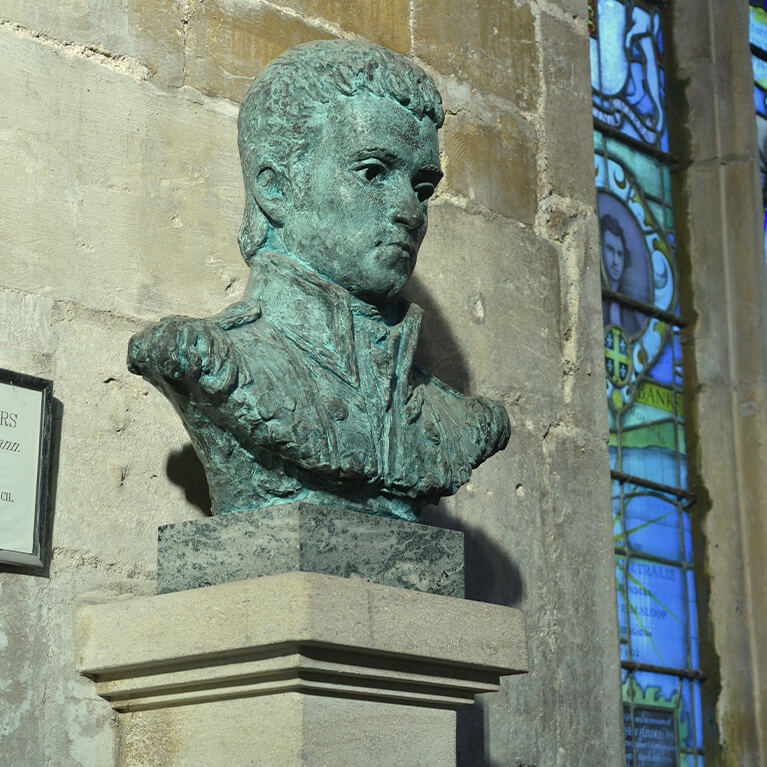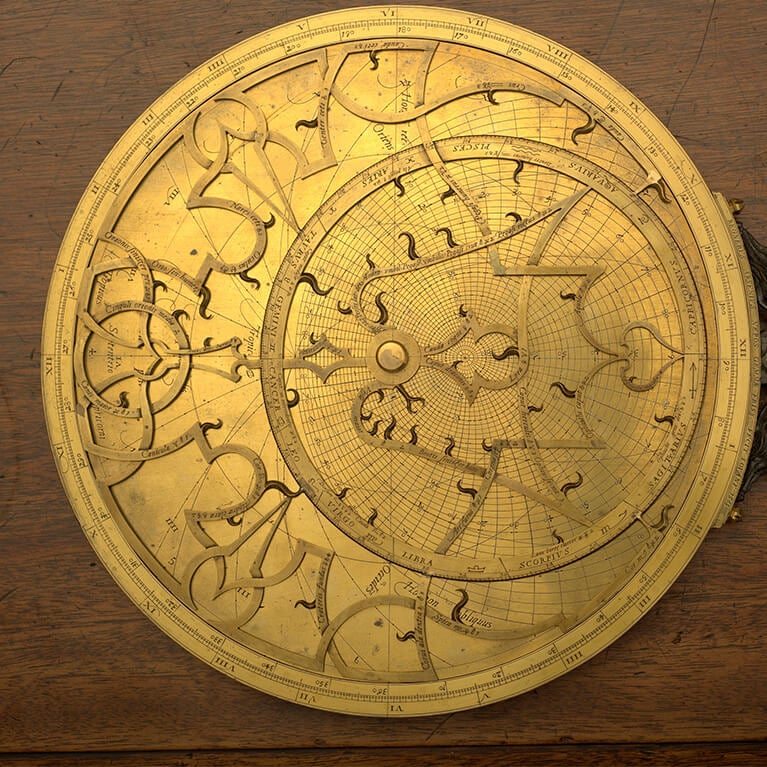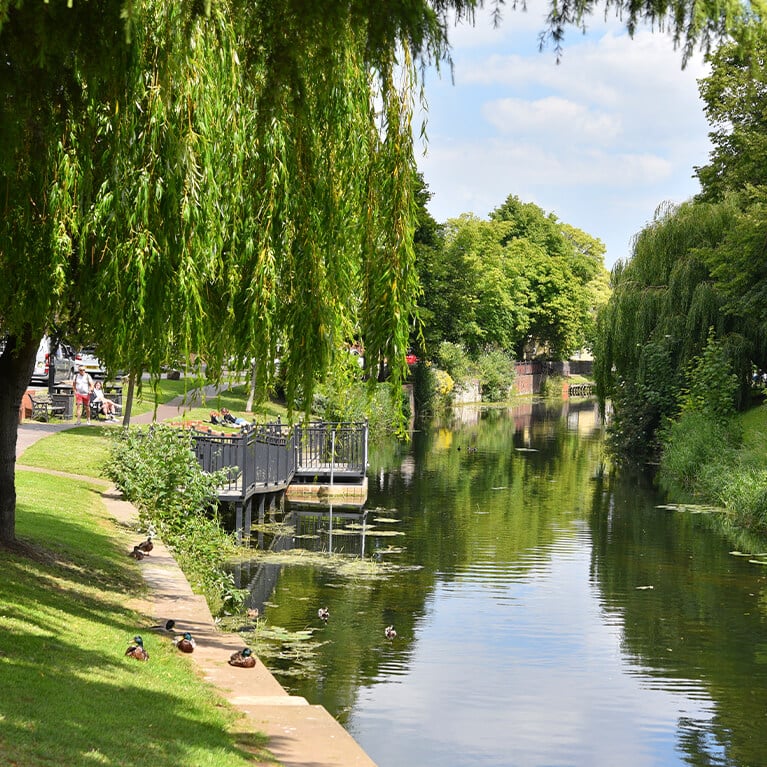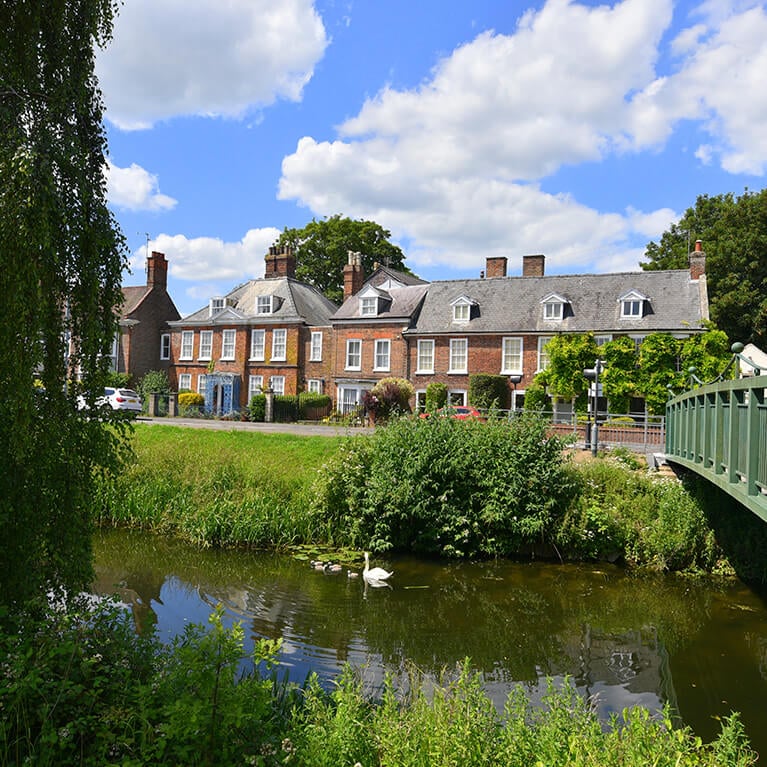large market town, bursting with brightly coloured tulips in spring
An attractive market town with pretty Georgian houses that front the tree-lined River Welland which runs through the centre of the town. Many buildings show a strong Dutch influence, the 15th century Ayscoughfee Hall, now a museum, is particularly fine. St Mary and St Nicholas has a fine Lincolnshire hammer-beam roof and a profusion of aisles.
Commercial centre of the Fen flower and bulb industry due to the rich silty soils. The town attracted huge crowds to its annual Spalding Flower Parade, held from 1959 to 2013, to celebrate the region’s vast tulip production. In 2023 a new flower parade was organised.
The Springfields Designer Outlet Shopping Centre includes over 50 designer brands, Festival Gardens and children’s Adventure Land. The Spalding Water Taxi offers a relaxing 40 minute river cruise between Spalding town centre and Springfields. Other attractions include the Pinchbeck Engine Museum, Bulb Museum and the Gordon Boswell Romany Museum.
SPECIAL TO Spalding
- Riverside setting
- Water taxi on the River Welland
Spalding Gentleman’s Society
- Donington and Matthew Flinders
Tulips at Spalding Festival Gardens
spalding
Festival Gardens
Springfields Festival Gardens are a beautifully landscaped area, featuring Chelsea-style celebrity showcase gardens, including designs by Charlie Dimmock. During Spring the Gardens feature a magnificent display of daffodils, tulips and other bulbs celebrating the gardens close links to the bulb industry.
Historic buildings
Ayscoughfee Hall
Ayscoughfee Hall is a grade I listed building over 550 years old. The Hall was primarily a family home from 1451 to 1902. Throughout the centuries the Hall changed, with each owner adapting the building to accommodate their needs and to reflect the fashions of the time. This is seen by the Gothic inspired Victorian frontage, the Georgian Adam style ceiling in the galleried Entrance Hall, and the many exposed Medieval features throughout the Hall.
The Spalding Gentleman’s Society
The Spalding Gentleman’s Society (SGS) on Broad Street is an extraordinary collection. Founded in 1710 SGS is the only British provincial learned society that has remained in existence for over three centuries. Societies like SGS grew from men meeting to drink the fashionable new beverages of coffee, tea and chocolate and to talk on almost every subject. SGS had two types of members: regular members who paid a subscription and attended the weekly meetings, and honorary members who were asked to subscribe a book to the value of at least £1 and to contribute via correspondence – most notable being Sir Isaac Newton, Sir Joseph Banks and Alfred Lord Tennyson. The present museum retains the original donations, but more than just books – coins, archaeological finds, scientific instruments, porcelain and many other extraordinary items. There was clearly a competitive spirit and one-upmanship involved in the donations! The Spalding Gentleman’s Society is currently undergoing a refurbishment and whilst closed they will be at Ayscoughfee Hall Museum.
more things to do in the Spalding area
enjoy a bite to eat nearby
The Great Explorers
Did you know?
Not far from Spalding is the village of Donington. Captain Matthew Flinders, who led the first circumnavigation of Australia was born here in 1774. He joined the Royal Navy aged 15, inspired by reading Robinson Crusoe. He and George Bass (from Aswarby, Lincolnshire) confirmed that Tasmania was an island, he is also credited as being the first to use the name Australia to describe the continent and the Flinders name is associated with over 100 places and geographical features there. The location of his grave in London was lost, but in the excavations for the HS2 project his coffin was found and identified by its lead coffin plate. He was reburied at Donington in 2024. There is also a statue of Flinders in the village which includes his cat Trim who accompanied him on his voyages.
more about the South Countryside
Discover more information about things to do, food and drink and places to stay in the area.
